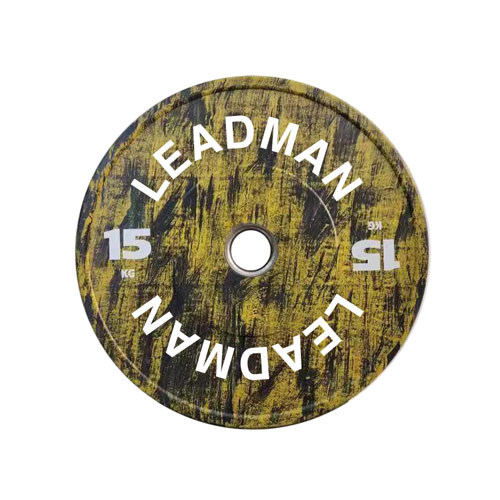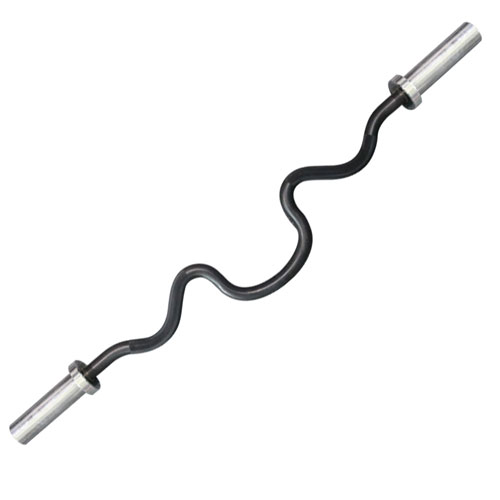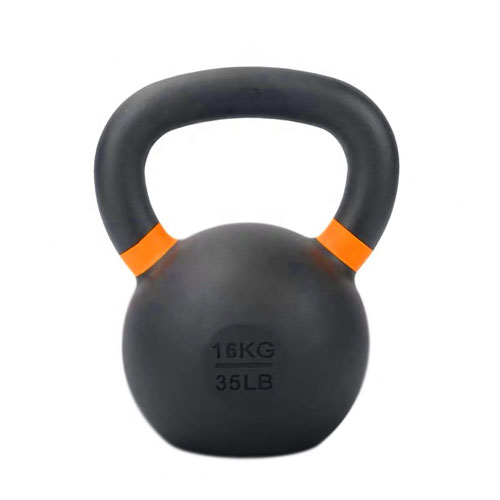Cómo quitar el óxido de su Barbell: Una guía completa

A rusty barbell is a common sight, particularly in home gyms where equipment might not receive the same level of care and attention as in a commercial setting. The damp air, fluctuating temperatures, and occasional spills can all contribute to the formation of rust on your cherished weightlifting apparatus. This isn't just an aesthetic issue; a rusty barbell poses significant safety risks. Rust weakens the metal, potentially leading to fractures or breakage during use, resulting in serious injury. Furthermore, a compromised barbell can affect your workout, making it difficult to maintain proper form and potentially hindering your strength gains.
This blog post will equip you with the knowledge and techniques to effectively remove rust from your barbell, restoring its functionality and safety. We'll explore a range of methods, from simple home remedies to more advanced techniques. However, it's important to set realistic expectations: some rust damage may be too extensive for DIY solutions and might require professional intervention.
Evaluación de los daños: ¿De cuánto óxido estamos hablando?
Before embarking on any rust removal process, carefully assess the extent of the damage. Two main types of rust are crucial to identify:
Óxido superficial: This is characterized by a reddish-brown coating on the barbell's surface. It’s usually relatively easy to remove and doesn't significantly compromise the barbell's structural integrity. Surface rust often appears as a thin layer, easily scraped off with a fingernail.
Óxido de picadura: This is more serious. Pitting rust involves the corrosion penetrating deeper into the metal, creating pits and holes. This weakens the barbell considerably and poses a higher risk of failure during use. Pitting rust is often darker and more ingrained in the metal than surface rust.
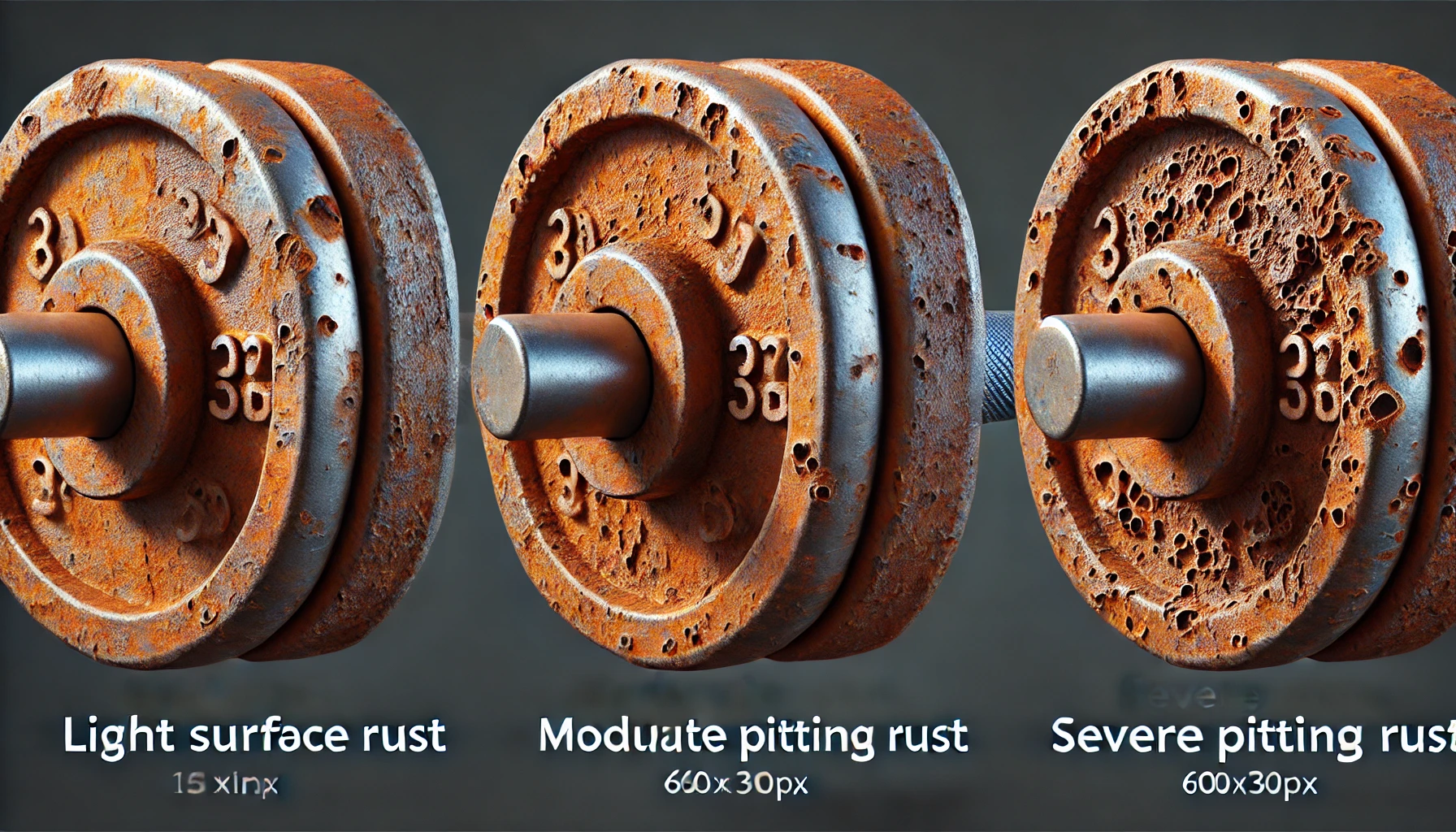
¿De cuánto óxido estamos hablando?
Determinar la gravedad guiará la elección del método de limpieza. El óxido superficial leve puede tratarse a menudo con técnicas de limpieza sencillas. El óxido con picaduras moderadas puede requerir métodos más agresivos, mientras que el óxido con picaduras graves suele requerir ayuda profesional o la sustitución de la barra.
La seguridad ante todo: Equipo de protección y espacio de trabajo
La eliminación del óxido implica el uso de productos químicos agresivos y materiales abrasivos, por lo que la seguridad es primordial. Lleve siempre lo siguiente:
- Guantes: Protect your hands from chemicals and sharp edges. Choose heavy-duty gloves suitable for the chosen method.
- Protección de los ojos:Las gafas de seguridad le protegerán los ojos de los residuos que salgan despedidos y de las salpicaduras de productos químicos.
- Protección respiratoria:Una mascarilla antipolvo o de respiración es crucial, sobre todo cuando se utilizan herramientas abrasivas o productos químicos de limpieza, para evitar la inhalación de partículas o humos nocivos.
Establish a well-ventilated workspace, ideally outdoors. If working indoors, ensure adequate ventilation to minimize exposure to fumes. Proper disposal of used materials is also crucial. Follow local regulations for disposing of chemical waste and sharp objects.
Método 1: Limpieza simple - Para óxido superficial ligero
For barbells with light surface rust, a simple cleaning might suffice. This involves using a wire brush to physically remove the rust.
Selección del cepillo de alambre: Several types of wire brushes are available. Steel wool is effective but can leave scratches. Brass wire brushes are gentler and less likely to damage the barbell's finish. Choose the brush appropriate for the barbell's material and the severity of the rust.
Proceso de limpieza: Apply soapy water to the barbell. Using firm but controlled strokes, scrub the rusted areas with the wire brush. A scrubbing pad can augment the cleaning power, especially in crevices. Rinse thoroughly with clean water to remove all traces of soap and rust particles. Finally, dry the barbell completely with a clean cloth.
Método 2: Remojo en vinagre - Un enfoque natural
Vinegar's acidity effectively dissolves rust. This method is suitable for moderate surface rust and is environmentally friendly.
Proceso de remojo: Submerge the rusty barbell in a container large enough to fully immerse it. Fill the container with white vinegar, ensuring the barbell is completely covered. The soaking time depends on the rust severity; light rust might only require a few hours, while heavier rust may need up to 24 hours or even longer.
Mejora de la eficacia (opcional): Adding salt to the vinegar solution enhances its rust-removing capabilities. The salt acts as an electrolyte, speeding up the chemical reaction.
Limpieza posterior al remojo: After soaking, remove the barbell and rinse it thoroughly with water. Use a wire brush or scrubbing pad to remove any remaining loosened rust. Dry thoroughly.
Método 3: Pasta de bicarbonato - Abrasión suave
Para zonas delicadas u óxido más ligero, una pasta de bicarbonato de sodio ofrece un enfoque más suave.
Preparación de la pasta: Mix baking soda with water to form a thick paste. Apply the paste to the rusted areas using a cloth or sponge.
Aplicación y fregado: Gently scrub the paste onto the rusted surface using a soft-bristled brush or a non-abrasive cloth. Avoid excessive scrubbing, which could damage the barbell.
Aclarado y secado:Enjuague bien la barra con agua para eliminar todos los restos de pasta y séquela completamente.
Método 4: Eliminadores de óxido comerciales - Para óxido persistente
Los desoxidantes comerciales ofrecen soluciones más potentes para el óxido persistente.
Selección de productos: A wide array of commercial rust removers is available in gels, liquids, and sprays. Choose a product appropriate for your barbell material and the severity of the rust.
Precauciones de seguridad: Always read and follow the manufacturer's instructions carefully. Wear appropriate protective gear (gloves, eye protection, respirator). Work in a well-ventilated area.
Aplicación: Apply the rust remover according to the manufacturer's instructions. This may involve brushing, spraying, or soaking. Allow sufficient time for the product to work its magic.
Eliminación:Elimine el producto antioxidante usado de acuerdo con las instrucciones del fabricante y la normativa local.
Método 5: Electrólisis - La técnica avanzada
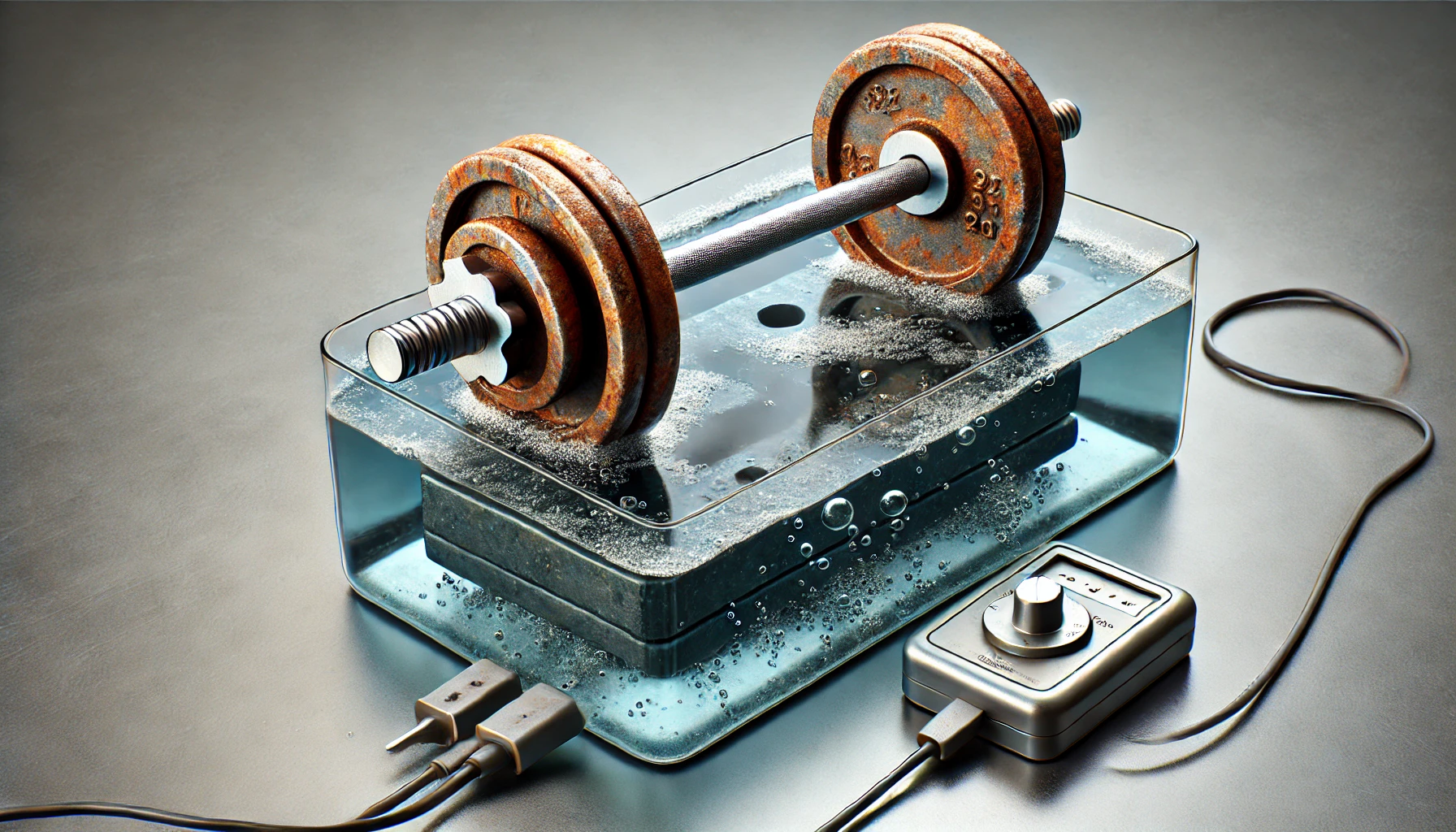
Electrólisis - La técnica avanzada
La electrólisis es una técnica más avanzada que elimina eficazmente el óxido sin dañar el metal subyacente.
Explicación del proceso: Electrolysis uses an electric current to dissolve rust. The rusty barbell acts as the cathode (negative electrode), while another piece of metal (like a steel plate) serves as the anode (positive electrode). Both are submerged in an electrolyte solution (like baking soda and water). The current pulls the iron oxide (rust) from the barbell and deposits it on the anode.
Materiales necesarios:Necesitarás una fuente de alimentación (un cargador de baterías funciona bien), un recipiente para contener la solución electrolítica, la propia solución electrolítica, la barra oxidada (cátodo) y un ánodo de sacrificio.
Configuración: Connect the positive terminal of the power source to the anode and the negative terminal to the cathode. Submerge both in the electrolyte solution, ensuring they don't touch.
Ventajas e inconvenientes:La electrólisis es muy eficaz, sobre todo para objetos muy oxidados, pero requiere equipos más especializados y conocimientos técnicos.
Después del tratamiento: Protección de la barra
Una vez eliminado el óxido, es fundamental evitar que vuelva a aparecer.
Secado a fondo:Seque completamente la barra para evitar que la humedad provoque una mayor formación de óxido.
Revestimiento protector: Apply a protective coating to prevent future rust. Options include oil (WD-40, gun oil) or specialized rust-preventative paint.
Cuándo buscar ayuda profesional
If the rust damage is severe (extensive pitting, significant weakening of the metal), attempting DIY methods might be futile or even dangerous. In such cases, consider seeking professional help from a metal restoration specialist. They have the expertise and equipment to restore or replace severely damaged barbells.
Conclusiones: Un futuro sin óxido
Removing rust from your barbell requires careful assessment and the selection of an appropriate method. Simple cleaning is sufficient for light surface rust, while vinegar soaking, baking soda paste, or commercial rust removers can handle moderate rust. Electrolysis is an advanced option for heavily rusted barbells, but professional help may be necessary for extensive damage. Remember, preventing rust through proper storage and regular maintenance is key to keeping your barbell in optimal condition.
Consulte el blog >>Cómo elegir el almacén de platos de pesas adecuado para su gimnasio



